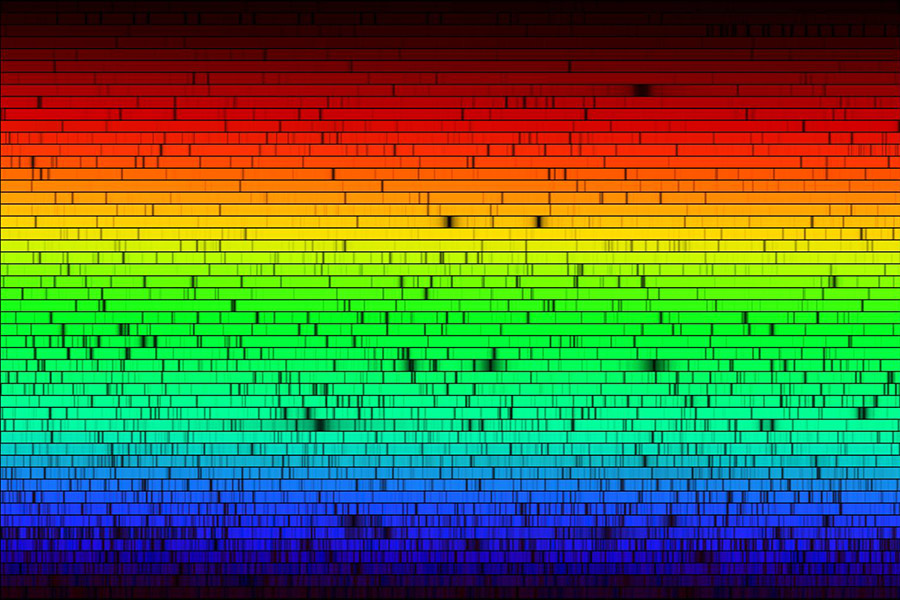Sun's Spectrum

N.A.Sharp, NOAO/NSO/Kitt Peak FTS/AURA/NSF
This patch of rainbow colors shows the visible light spectrum of the Sun. If you used a prism to separate sunlight into its constituent colors, you would see something like this. Astronomers used a large, prism-like instrument to create this extremely detailed view of the Sun's spectrum. The spectrum starts with red light, with a wavelength of 700 nanometers (7,000 angstroms), at the top. It spans the range of visible light colors, including orange and yellow and green, and ends at the bottom with blue and violet colors with a wavelength of 400 nm (4,000 angstroms). The spectrum is so long and detailed that it had to be cut into strips; each of the 50 strips spans a wavelength range of 6 nanometers (60 angstroms). The dark lines throughout the spectrum are caused by absorption of light by various elements in the Sun's atmosphere. This dark-line absorption spectrum is sort of like a fingerprint of the Sun; it provides scientists with lots of information about the chemical composition of the Sun and even about the temperature of different regions of the solar atmosphere. This spectrum was created using the McMath–Pierce solar telescope at the National Solar Observatory on Kitt Peak, near Tucson, Arizona.